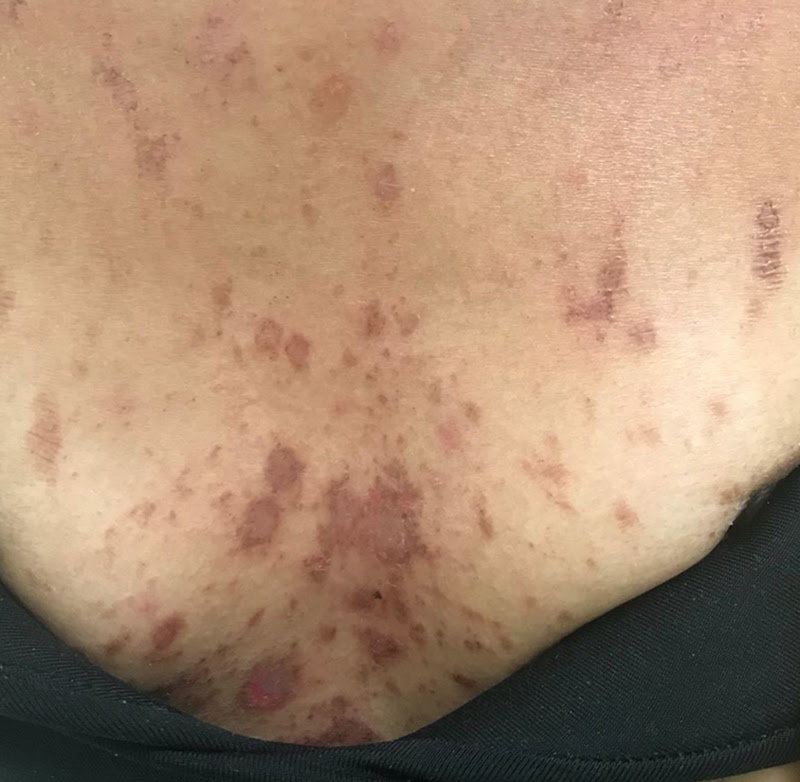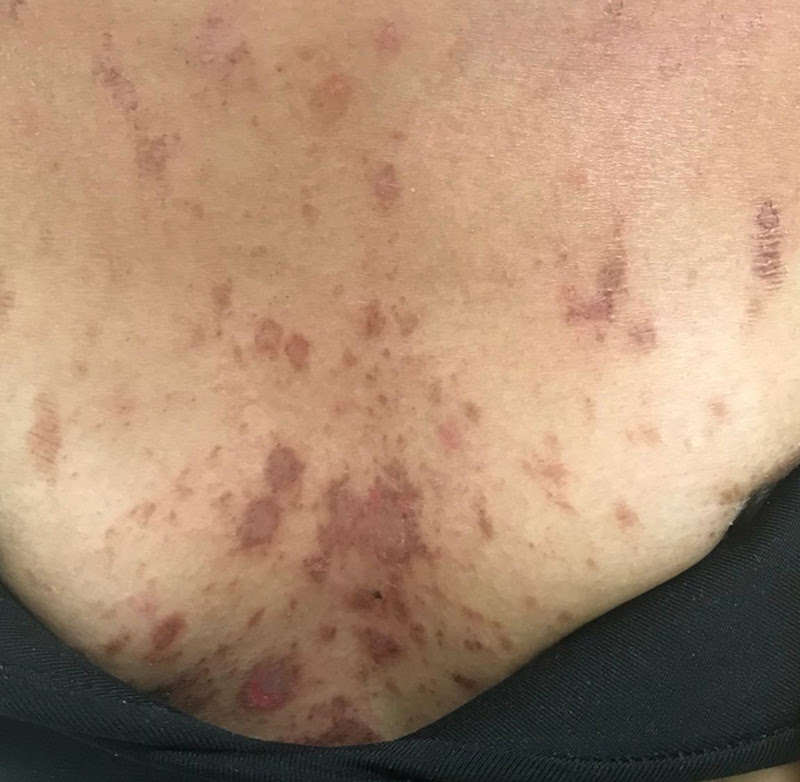Figure 1 Quiz of the Week
A 32-year-old female presents with a headache and a rash on her trunk and extremities. She has had unprotected sex with multiple partners over the last two months, but denies any history of sexually transmitted infections. Examination reveals generalized non-tender lymphadenopathy, a diffuse macular rash on her chest and arms, and patchy hair loss. Venereal Disease Research Laboratory (VDRL) and fluorescent treponemal antibody-absorption (FTA-ABS) tests are both positive, and she is given a single dose of penicillin G benzathine intramuscularly. She returns within a few hours with a worsening rash (seen here), myalgia, and a fever.

Image credit: @gabriellabaraujo.
Answer: Supportive treatment
This patient’s initial presentation is suggestive of secondary syphilis, a systemic illness that follows primary infection with the bacterium Treponema pallidum when left untreated. Treatment of early syphilis can result in the Jarisch-Herxheimer reaction (as seen here), an acute and self-limited reaction, occurring in up to 35% of cases, that typically develops within hours of receiving therapy. The initial rash may worsen and can be accompanied by headache, myalgia, diaphoresis, and hypotension. While the mechanism by which this rash develops is not well understood, it is thought to result from the release of lipoproteins from killed organisms. Symptoms often resolve spontaneously within 12 to 24 hours, however patients may benefit from supportive treatment such as non-steroidal anti-inflammatory drugs (NSAIDS) or other antipyretics.
Read more and join the discussion now at Figure 1!
Explore cases, quiz yourself, and solve medical mysteries along with thousands of other medical professionals around the world on Figure 1, the free app where doctors expand their clinical knowledge.

